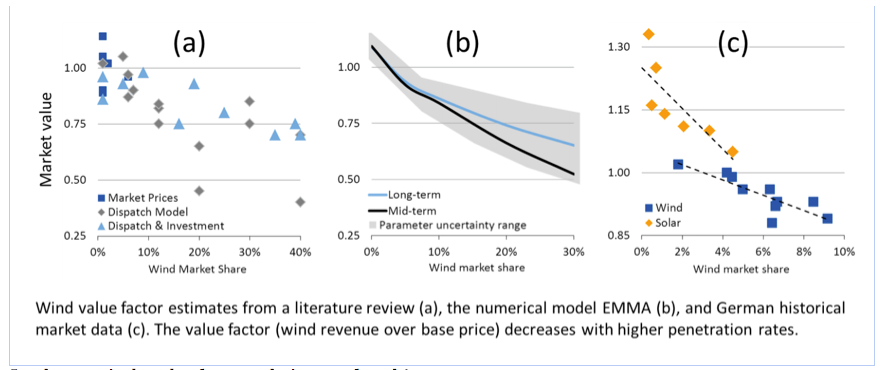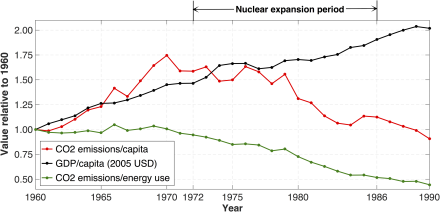 Guest Post by John Morgan. John is Chief Scientist at a Sydney startup developing smart grid and grid scale energy storage technologies. You can follow John on twitter at @JohnDPMorgan.
Guest Post by John Morgan. John is Chief Scientist at a Sydney startup developing smart grid and grid scale energy storage technologies. You can follow John on twitter at @JohnDPMorgan.
The fastest path to decarbonization would seem to be combining every kind of low carbon energy available – the so-called “all of the above” camp of clean energy advocacy. The argument runs that different kinds of clean energy are complementary and we should build as much of each as we can manage. This is not in fact the case, and I’ll show that a mix of wind and solar significantly decreases the total share of energy that all renewables can capture. The “all of the above” approach to emissions reduction needs to be reconsidered.
In a recent essay Breakthrough Institute writers Jesse Jenkins and Alex Trembath have described a simple limit on the maximum contribution of wind and solar energy: it is increasingly difficult for the market share of variable renewable energy [VRE] sources to exceed their capacity factor. For instance, if wind has a capacity factor of 35%, this says it is very difficult to increase wind to more than 35% of electrical energy. Lets look at why this is so, and extend the principle to a mix of renewables.
The capacity factor (CF) is the fraction of ‘nameplate capacity’ (maximum output) a wind turbine or solar generator produces over time, due to variation in wind, or sunlight. Wind might typically have a CF of 35%, solar a CF of 15% (and I’ll use these nominal values throughout).
Jesse and Alex’s “CF% = market share” rule arises because it marks the point in the build out of variable renewables at which the occasional full output of wind and solar generators exceeds the total demand on the grid.
At this point it gets very hard to add additional wind or solar. If output exceeds demand, production must be curtailed, energy stored, or consumers incentivized to use the excess energy. Curtailment is a direct economic loss to the generators. So is raising demand by lowering prices. Energy storage is very expensive and for practical purposes technically unachievable at the scale required. It also degrades the EROEI of these generators to unworkable levels.
Jesse and Alex make this argument in detail, backed up with real world data for fully connected grids (i.e. not limited by State boundaries), with necessary qualifications, and I urge you to read their essay.
The “CF% = market share” boundary is a real limit on growth of wind and solar. Its not impossible to exceed it, just very difficult and expensive. Its an inflexion point; bit like peak oil, its where the easy growth ends. And the difficulties are felt well before the threshold is crossed. I’ve referred to this limit elsewhere as the “event horizon” of renewable energy.









